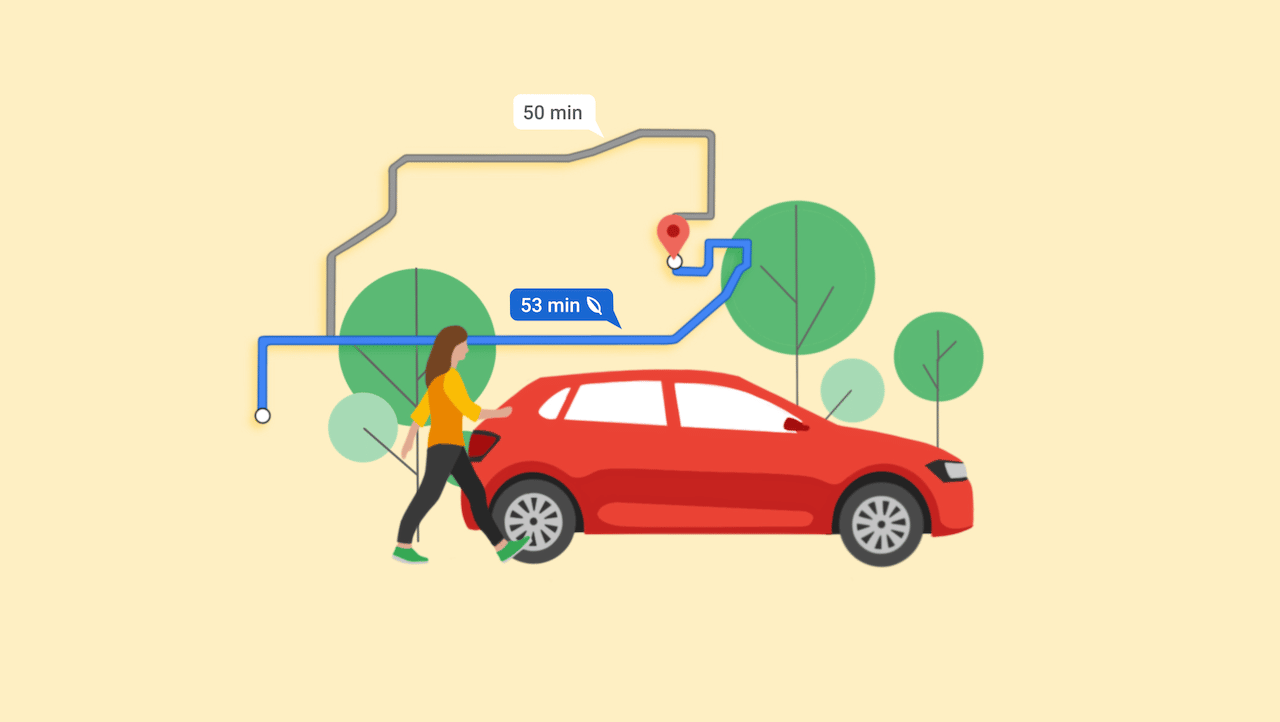Sustainability, and it was time, is an increasingly felt and debated problem. And for which governments, companies, political and economic associations put forward projects and ideas.
Attention to environmental sustainability is part, in a more or less decisive way, of the programs of almost all the parties vying for the next political elections on 25 September.
Then, to take just one example, the European Union’s proposal to make smartphones eco-sustainable is also very recent. Despite all the difficulties of implementation that it brings with it.
Google Maps, one of the most used and appreciated apps, also focuses on sustainability. And it does so with a series of innovations illustrated in a note that appeared on the official Google blog on Wednesday 7 September.
Let’s find out what are the latest updates of the application in favor of a more economical way to travel. And that rewards particularly sustainable paths.

Google Maps for sustainability
Maps, the many drivers who use it in the world know, gives the possibility to create the route from one point to another according to different priorities and needs, including the means of transport used. Even if, let’s face it, we all usually set the shortest route.
From today Google Maps is also attentive to sustainability, and allows you to create the most convenient itinerary from an environmental point of view.
The note from the official blog gives a concrete example, that is “a day walking around the village of Orvieto, starting from Grosseto: a journey of over two hours”.
After the list of all the possible options to set the trip to your liking, here is the question (rhetoric): “But what if there were other options? A journey that would take a few more minutes, but would save over 20% of the expected fuel consumption. “
Google Maps and eco-sustainable routes
The question, we said, is rhetorical. Because already in the next paragraph we discover how this possibility exists, thanks to the new eco-sustainable paths of Google Maps.
Paths “that we are starting to implement today in 40 European countries, including Italy. With this feature, you can choose an optimized path to reduce fuel consumption, which allows you to save on fuel and reduce carbon dioxide emissions, something that is close to the heart of many Europeans, as well as a real concern; in fact, according to a 2022 Statista report, road transport is the main source of carbon dioxide emissions in Europe. “
Savings not only for the environment
And so, if you are not in a particular hurry, Google Maps will be in favor of eco-sustainability but also, at the same time, of our wallet, indicating the routes along which less fuel is consumed.
However, the option according to which the only selectable parameter is the saving in terms of time has not disappeared.
However, it seems that since its launch in the United States and Canada, the sustainability option of Google Maps has given excellent results. The savings amount to more than half a million metric tons of carbon dioxide emissions – as if 100,000 cars had been taken off the roads.
Consumption calculated on the different types of engine
A subtlety of this new Google Maps option is that the lowest fuel consumption route varies according to the engine type of your vehicle.
For example, diesel engines are usually more efficient at higher speeds than petrol or gas engines. And hybrid and electric vehicles perform better in choppy traffic. Therefore it will soon be possible for Maps users to select the type of engine and find the most environmentally friendly route, as well as the most accurate estimates on fuel or energy efficiency.
Says the note: “This technology is made possible thanks to data from the National Laboratory for Renewable Energy (NREL) of the US Department of Energy and data from the European Environment Agency. By matching this information to Google Maps driving trends, we were able to develop advanced machine learning models trained on the most popular engine types in a given region. “
Towards a new sensitivity?
In the last part of the note, some obvious indications are given (but it is never wrong to repeat them) to promote sustainable mobility: give priority to electric vehicles, walk as long as distances allow, use public transport and prefer two wheels at four.
However, it seems that a change of mentality is finally taking place: in July 2022, Google Maps recorded a + 55% on the use of public transport, a + 33% on walking routes and a + 25% on bicycle routes compared to 2021.
Also in the same period, the number of searches for electric vehicle charging stations increased by almost 130%. In addition, the search for hiking areas has grown by over + 200%.















Leave a Reply
View Comments